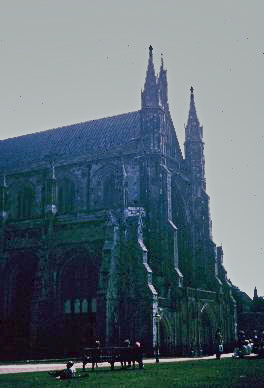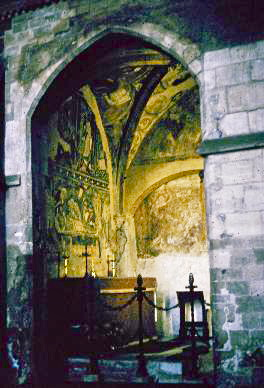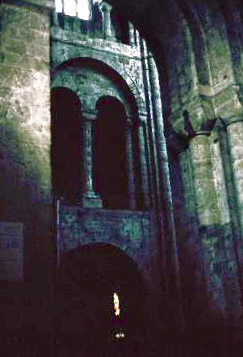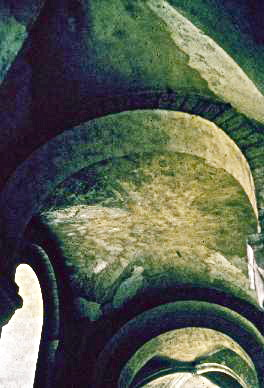ENGLAND
Before
the 10th century, most English buildings were constructed of wood;
stone buildings were small and roughly made. The Norman
Romanesque
style replaced the Saxon
style in England after the Norman
Conquest in 1066,
and from about 1120 to 1200, builders erected monumental Norman
structures, including numerous churches and cathedrals. England
developed a tradition, consciously or not, in which their churches
were longer and not as tall as counterparts on the European
continent. The long, narrow buildings were constructed with heavy
walls and piers, rectangular apses, double transepts, and deeply
recessed portals. Naves were covered with flat ceilings, later
replaced by vaults, and side aisles were usually covered with groined
vaults.

As
mentioned previously, many
major churches were placed at the edges of cities,
thus
enabling their grounds to be open and green.
This is Winchester Cathedral.
The
following illustrations are in Winchester Cathedral, in what was the
crypt. Begun in 1079 in the Romanesque style, it is below the local
water table, and floods in winter. It is accessible from the north
transept.

Notice
that the opening arch is pointed – this is a later construction.
The area inside that pointed arch is the original Romanesque, and the
little of that original which remains.

A
bifurcated arch.

The
roof construction might have been a groin vault, but it is obviously
not very well articulated. The original might
have been there, but the centuries have taken their toll.
©
Architecture Past Present & Future - Edward D. Levinson, 2009




